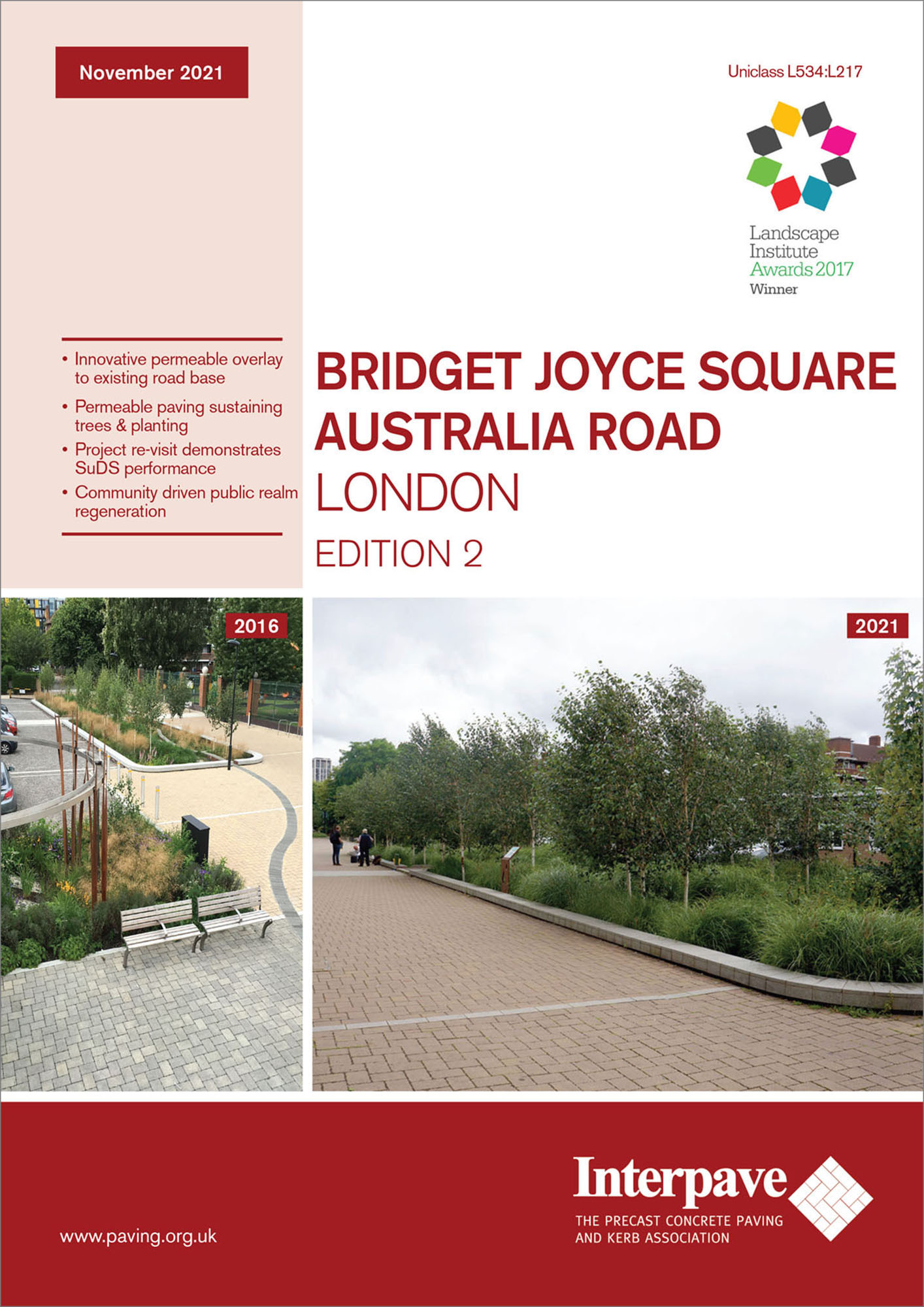Permeable Paving and Trees in Synergy
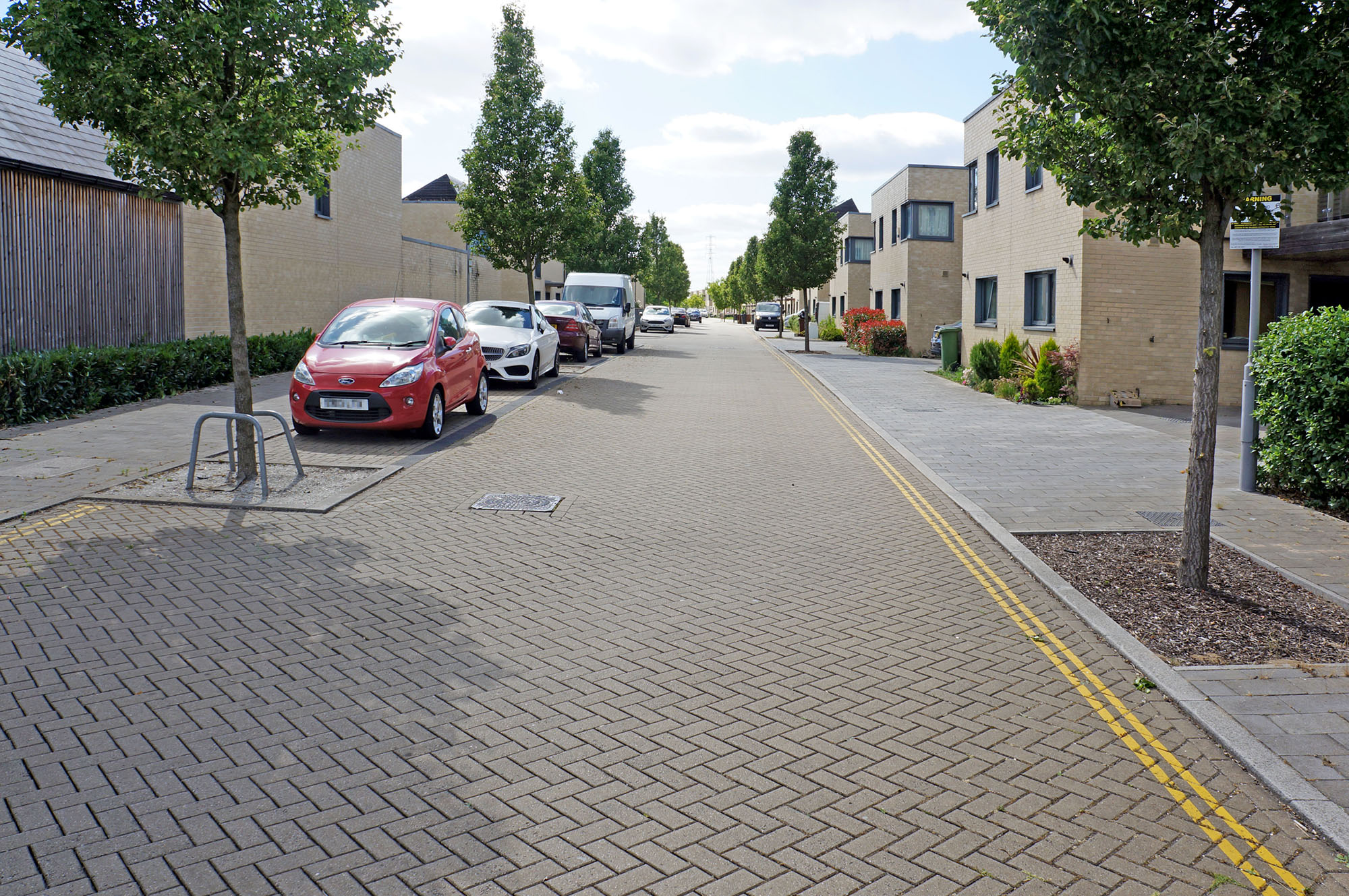
Helping to address climate change, street tree planting and retention of existing trees in developments – with provision for long-term maintenance – are now embedded in planning policy. Concrete block permeable paving offers an important opportunity to help satisfy these requirements simply, integrated with SuDS and contemporary urban design.
The 2021 ‘National Planning Policy Framework’ (NPPF) for England lays out what local planning authorities (LPAs) will require, when setting local policies and also considering planning applications for all developments. The NPPF states that: ‘Planning policies and decisions should ensure that new streets are tree-lined and that opportunities are taken to incorporate trees elsewhere in developments’.
Maintenance Requirement
However, measures need to be put in place to nurture and allow trees to mature, generally for decades enabling them to actually deliver their real potential – including net carbon storage, urban cooling through shading and evapotranspiration, biodiversity and public wellbeing. So, the NPPF also requires that: ‘appropriate measures are in place to secure the long-term maintenance of newly-planted trees, and that existing trees are retained wherever possible’.
Local planning authorities will now incorporate long-term tree maintenance measures in their planning consents and a straightforward spatial solution, such as permeable paving, offers a holistic multifunctional solution.
Urban trees and paving have traditionally been seen as in conflict. But this is not the case with concrete block permeable paving, a key sustainable drainage (SuDS) technique to reduce flood risk and make cities more liveable.
Concrete block permeable paving (CBPP), offers unique opportunities to collect, attenuate and treat rainwater runoff, removing pollutants for a gradual supply of clean water irrigating green infrastructure. Essentially, this technology shares the same impressive performance as conventional modular concrete paving products, being slip resistant, durable, strong and sustainable.
The difference with permeable paving is enlarged joints, filled with a permeable aggregate, and the materials used below the blocks, which are specifically selected to accommodate water without clogging. Concrete block permeable paving is unlike – and not to be confused with –permeable materials, which behave very differently.
Irrigation and Gas Exchange
Unlike conventional impermeable hard landscape materials, CBPP allows the same pattern of run-off transfer to the ground as natural vegetation, enabling water to reach tree and shrub roots, despite providing an attractive hard surface above. In addition to irrigation directly from rain, with CBPP there is scope for water storage and rainwater capture away from trees and their umbrella canopies, for gradual conveyance laterally to trees – essential during the summer.
In addition, CBPP enables air to reach roots and poisonous CO2 to escape. The favourable environment created for tree roots avoids pavement surface disruption and facilitates natural growth into lower levels for stability and longevity. CBPP can be used within new-build, or regeneration schemes with new tree planting and also for ‘rescuing' mature trees. Concrete block permeable paving can be used in conjunction with raingardens, tree-pits or proprietary systems avoiding air pipes, reservoirs or other structures for irrigation and gas exchange.
Minimal Maintenance
Permeable paving can be laid level and still avoids puddles without the need for drainage gulleys. It provides a safe, firm, pot-hole free surface for everyone – including wheelchair users and people pushing prams. Over two decades of experience in the UK demonstrates the long-term performance of concrete block permeable paving with minimal, if any, maintenance.
A new case study on regeneration projects in Tottenham, London, exemplifies the growing potential of concrete block permeable paving in the hands of innovative designers to deliver SuDS and optimise synergy with street trees to address climate change. It includes a concrete block permeable paved adopted highway that also accepts runoff from impermeable surfaces.
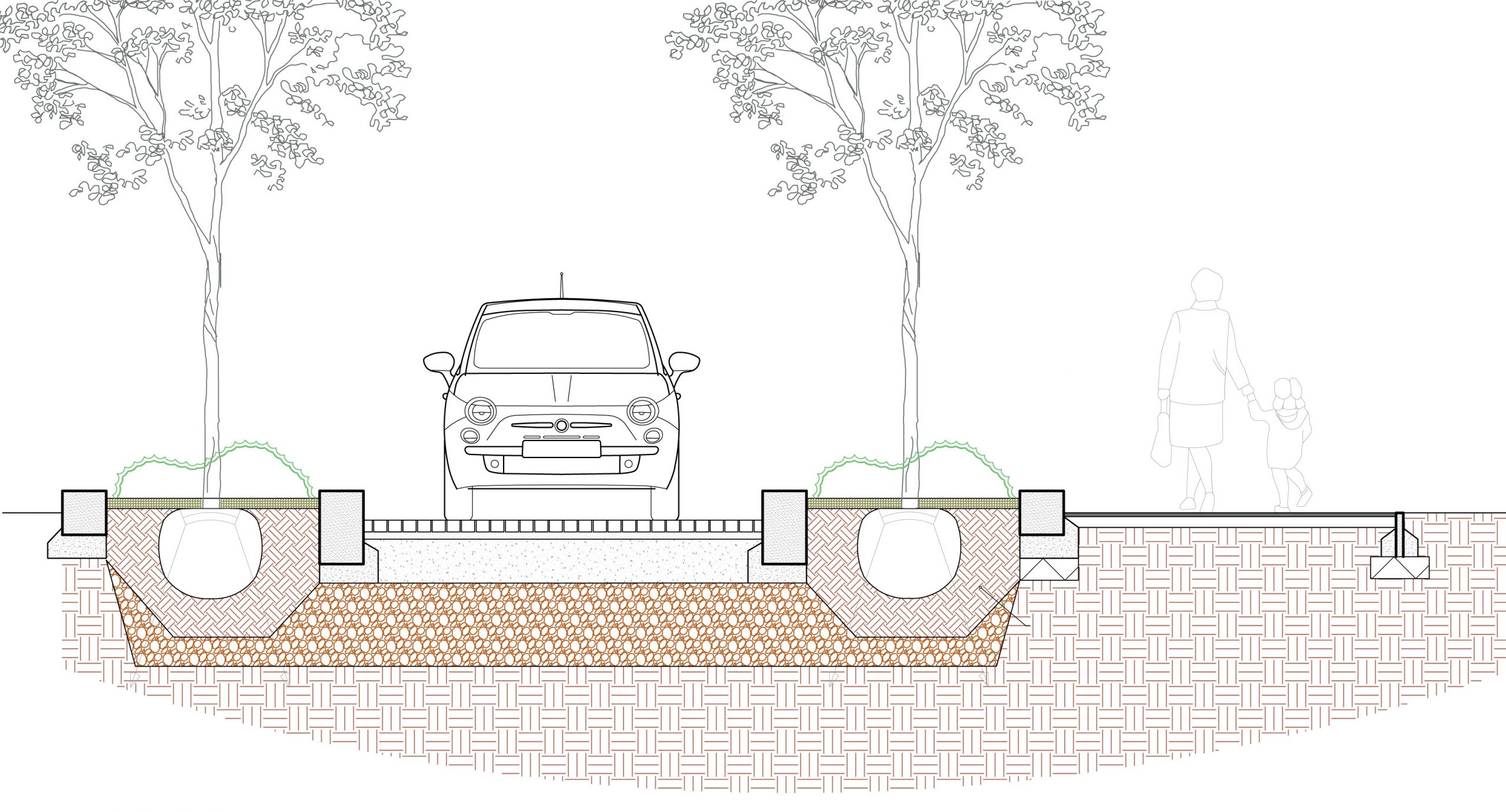
This paving incorporates structural tree pits, based on the ‘Stockholm Solution’, to enable trees to benefit from rainwater collected from an extended catchment, making them healthier and more resilient to drought. At Broad Lane Square in south Tottenham the same designers take forward these principles with ‘inverted raingardens’ protect existing trees and new green infrastructure, supplied with a gradual supply of clean water from extensive permeable paving catchments.
Low Intervention Retrofit
Another important innovation – particularly for regeneration – is the retrofitting of CBPP as an overlay to existing, conventional road bases or other hard surfaces. These thin overlays create attractive, safe and sustainable shared-surfaces.
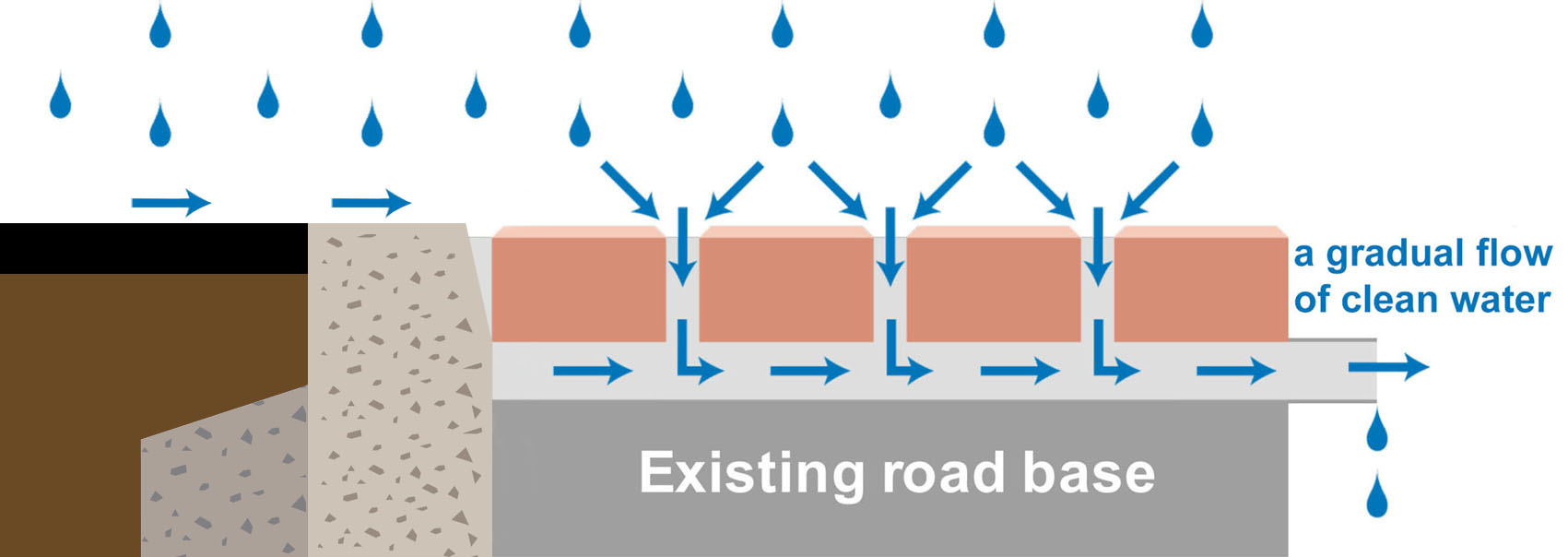
They can be particularly effective when used to supply a gradual flow of clean water horizontally into raingardens or bioretention areas with trees and other green infrastructure, via simple slot inlet/outlets, to store water for irrigation and biodiversity, as well as flood prevention. Such low-intervention techniques enable transformation of the public realm in response to the raft of recent active travel, low traffic and open space initiatives.
This approach is exemplified in Bridget Joyce Square, London, an important regeneration project which won the top prize at the 2017 Landscape Institute Awards. Here, a typical, adopted asphalt street and adjacent parking areas were transformed for community use with CBPP overlay shared surfaces and tree-planted raingarden basins – an exemplar for future urban landscapes. The basins provide water storage (in place of the paving sub-base) for SuDS to reduce overloading existing drains, as well as for irrigation.
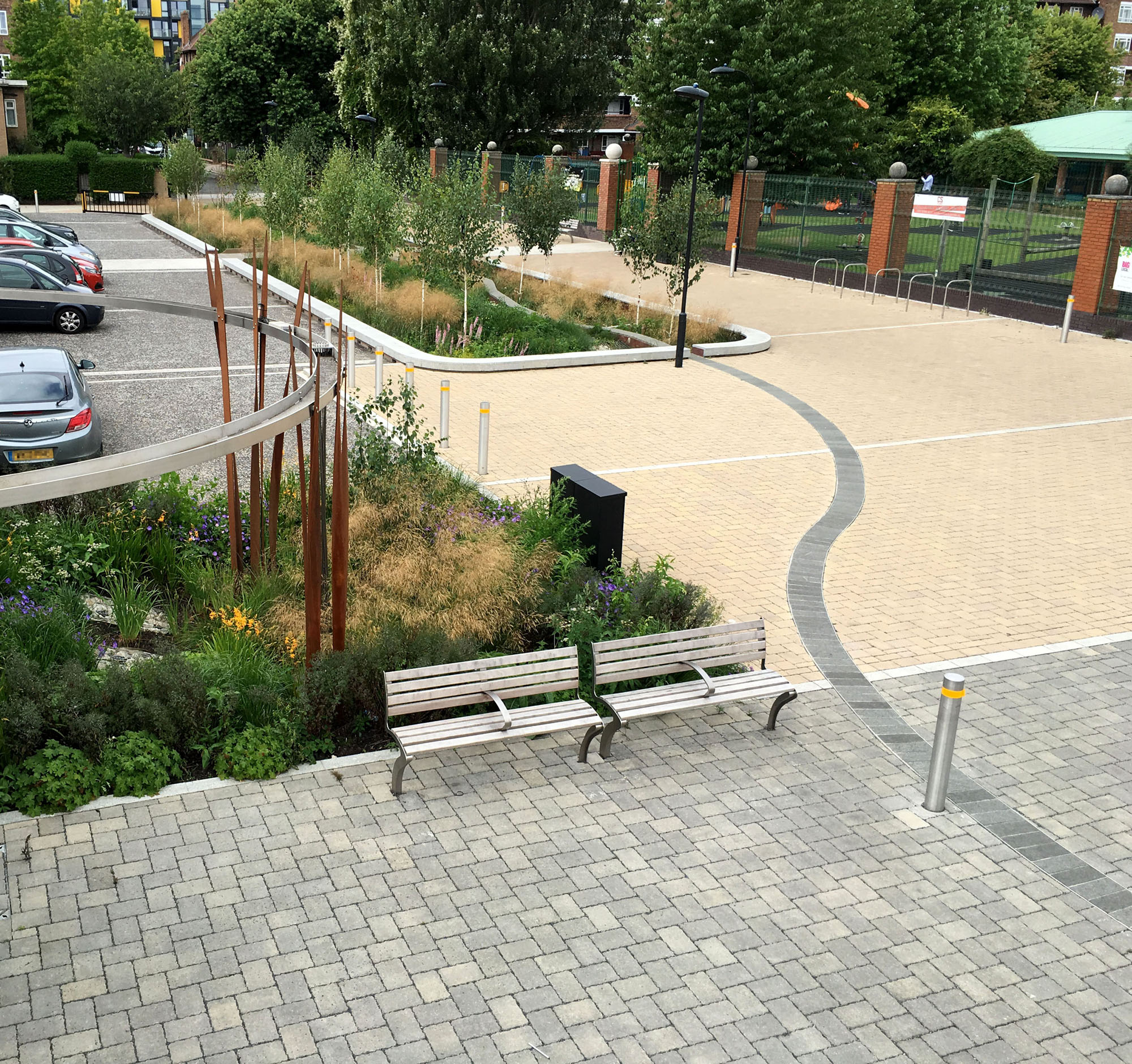
Well-established Green Infrastructure
Interpave revisited the project in August 2021, around 5 years after completion, and noted that trees and other green infrastructure were healthy, substantial and particularly well-established. The permeable paving is also performing well and, it is understood from local sources, experienced no problems during recent extreme summer storms, despite extensive flooding nearby.

